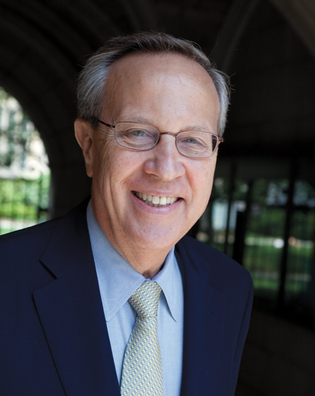 loading
loading
Q&A: Rick LevinYale College: still expanding? Mark OstowView full image
Y: The two new residential colleges are on hold, like many other construction plans at Yale. Yet there was an architectural model in Sterling Library during the college reunions, some demolition has taken place on the site, and more work has been done on the design. All this suggests they’re still a gleam in your eye. L: We put the colleges on hold in the winter of 2008–09, when we froze a number of other projects. However, we said at the time that if we had sufficient donor funding for any of these projects we would continue. In the case of the Art Gallery renovation and the new School of Management building, we were able to raise enough funds to begin construction. And, in the case of the new colleges, a pair of donors agreed to fund the design process all the way through to construction drawings. We will complete construction drawings in the spring of 2012. If we can raise the remaining funds, we would begin construction soon after. If we start in the summer of 2012 we could finish in 2015. But we need to raise the money. Y: What’s the target? L: The colleges will cost approximately $440 million. When you add in the cost of utilities, clearing the site, and renovating spaces elsewhere for those moved off the site, it comes close to $500 million. We have raised $172 million at this point. So we need to raise a little more than $300 million to be ready to go. Y: The colleges would increase the undergraduate body by about 15 percent—you’ll add 200 students to the current class size of about 1,300. There are costs associated with those additional students, especially faculty costs. L: Some of that faculty growth has already occurred. Before the crash hit, we added a substantial number of new faculty to the most overenrolled of our departments, political science. And, in all, the faculty of arts and sciences grew by 16 percent from 2000 to 2010—roughly proportionate to the increase in the student body we’re expecting. We are pretty well positioned, although we will still need to add some faculty to cover the increased enrollment in freshman English and foreign language classes. Y: And about the naming of the colleges. There was a rumor on campus recently that the colleges couldn’t be named after women, for instance, because they have to be named after famous Yale College graduates of the past. L: No, they could be named after any person of accomplishment with a significant connection to Yale. An alumna from the Graduate School or a professional school would be possible. After all, John Davenport didn’t go to Yale College and neither did Abraham Pierson. The names of the new colleges will be decided by the Corporation [Yale’s board of trustees]. Y: The colleges will have towers, one of them 190 feet high—close to Harkness Tower’s 216 feet. L: The towers are intended to be distinctive markers visible from the central campus. They have to be tall enough to be seen, but not so tall as to seem out of scale with the surrounding buildings. Hence the compromise, at 190 feet. The tallest tower will be visible from York Street. The next tallest tower will be visible from High Street. This will provide a visual connection between the new colleges and the center of campus. Y: One issue you’re grappling with is that the site is away from the center of undergraduate life. What’s the state of the plans for developing the area to attract more students? L: To animate Prospect Street between Grove and Trumbull, we are proceeding with a plan for an exciting new program in the engineering school—a design lab in Becton. The whole ground floor and part of the second floor will be transformed into a facility where students can work on building projects and software projects collaboratively—a hub of student innovation, where students can work well into the night, with glass walls so activity is visible from the street. And there will be a café. The design center and the café will create a presence on the street that will change the feel of the block. And when the School of Management moves into its new location, it will leave behind three midsize lecture rooms and a number of seminar rooms across Prospect from the new colleges. Those that aren’t needed for graduate seminars will be used for Yale College teaching. A theater at the corner of Sachem and Prospect is planned, but it is unfunded as yet. Y: How do you weigh the new colleges against other investments, for instance in the professional schools? L: In the past 18 years, we have made dramatic investments in professional school facilities. We have renovated almost all of the music school facilities, the architecture school, the School of Art, the Law School, the forestry school, and the divinity school. We moved the nursing school to a better facility. The medical school has had an enormous amount of renovation—they have two new research buildings on the main campus, and we’ve bought the West Campus. We still need to build a new home for the School of Drama, and we are working on raising the funds. But it is time for the new colleges. Y: You’ve been hoping for these colleges for a long time. What makes them so compelling to you? L: Just doing right by the country. We’ve grown in virtually every dimension in the last 40 years, except for the size of the undergraduate population. We have more faculty by a large percentage, and more endowment per student, even adjusted for inflation. In every way, we have more resources available to students. We should be doing our part to educate more superb talented young people to serve the nation and, increasingly, the world.
The comment period has expired.
|
|